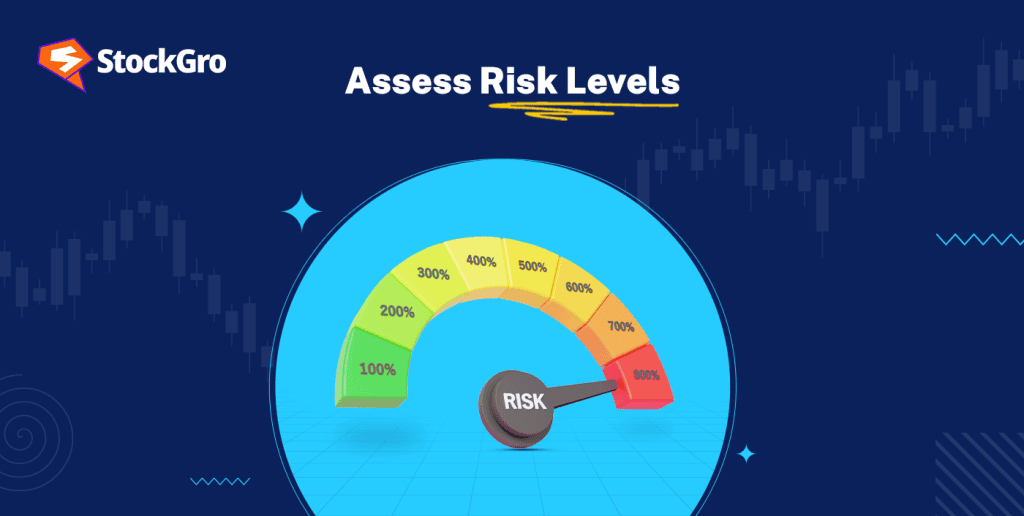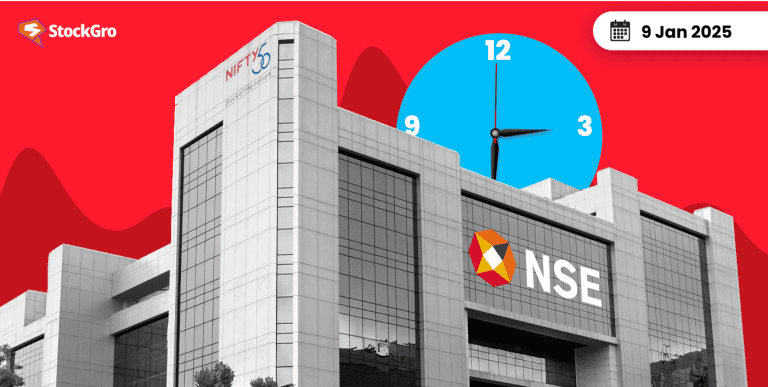
Risk indicates the plausibility of an investment giving lower than the expected return. It includes the likelihood of losing all or part of the capital invested in the asset class. On the other hand, the consequence and possibility of a risk is called a risk level.
For instance, if XYZ buys a stock, the possibility of losing his money is called risk. However, the degree of loss will be called a risk level.
Types of stock investment risks
Before getting into the method of risk level assessment, it is important to understand the different kinds of stock investment risk to optimise the assessment. These risks may apply to asset classes other than stock investment.
It is the possibility that an investor would lose money as a result of variables influencing the nation’s overall financial market and economic performance. It is also referred to as a systematic risk.
When an investment cannot be acquired or sold quickly primarily due to a lack of liquid funds, it is called liquidity risk.
Another name for inflation risk is purchasing power risk. It is the possibility that an investment’s cash flows would eventually lose value owing to inflation-induced declines in buying power.
It refers to the possibility that an unfavourable operational, market or financial circumstance might have an impact on a company’s activities or cause them to cease altogether.
Also read: Speculative Risk and Its Impact on Investments.
Methods of risk level assessment
There are various methods to assess the risk level of a stock investment. These methods can be used to calculate risk levels for other asset classes as well. Some of these methods are listed below.
A technical analysis ratio called alpha gauges how well a company is performing in comparison to a benchmark index or market.
Jensen’s Alpha = Actual return – [beta value x (return of index – risk-free rate of return) + risk-free rate of return]
In the stock market, alpha is frequently employed to monitor both the level of volatility and the active return produced by an investment. When a stock’s alpha is positive, it means it has surpassed its benchmark. However, when it is negative, it means it has underperformed.
Also read: Alpha in Stock Market: Definition and Importance.
A financial metric called beta quantifies the likelihood of price fluctuations for stocks in relation to the stock market. It’s a crucial sign of how volatile and risky a stock is.
Beta (β) = (the covariance of the security with a benchmark index in the Indian stock market) / the volatility of a particular asset over a given time period.
The following is an interpretation of a stock’s beta:
| Value | Interpretation |
| <1 | The stock is less volatile compared to the market |
| =1 | The stock is as volatile as the market |
| >1 | The stock is more volatile than the market |
| Negative beta | Stock moves opposite to the market |
The standard deviation calculates how far a group of data points deviates from its mean. A bigger divergence from the mean is indicated by a higher standard deviation, and a smaller variance is indicated by a lower standard deviation.
It helps determine the target price of a stock. Here, the target price is the value at which a share can be purchased. Standard deviation must be used with other forms of technical analysis.
This ratio enables investors to better grasp the risk level of an investment by understanding the correlation between risk and return. This ratio examines the amount of additional return generated by undertaking a particular degree of risk.
Sharpe Ratio = Anticipated additional return [Average return-Risk-free return] / Standard deviation of returns
- Value at risk
VaR is a technique for calculating an asset or portfolio’s maximum possible loss over a predetermined amount of time. Based on market conditions and investor confidence. It takes into account the time horizon, the chance of the loss, and the possible loss size.
Mitigating stock investment risk through diversification
The ideas of risk and correlation are important to diversification. Securities from a variety of sectors with differing levels of risk will make up a well-diversified portfolio. These assets should have less correlation with each other because an investor’s overall returns might be balanced when one investment is losing money and another is generating money.
Also read: Risk management in stock market
What is a risk pyramid?
A very useful tool for asset allocation is the risk pyramid. The structure of the pyramid is categorised in the following manner to optimum return.
- The base of the pyramid is the maximum chunk of the investment pool that gets invested into the least risky assets and gives a strong foundation to the entire portfolio. Eg. money market instruments
- The medium portion is invested into medium-risk assets that give optimal returns. Eg. Mutual funds.
- The top portion that gets the least chunk of the investment pool is invested into comparatively riskier assets that give very high returns, like futures.
Conclusion
The balance between the demand for the best rewards and the lowest risk is known as the risk-return tradeoff. Generally speaking, low risk is linked to low potential rewards, whereas high risk is linked to high potential returns. For a desired return, each investor must choose the quantum of risk they can and are prepared to take. Age, income, investing objectives, liquidity requirements, time horizon, and personality are some of the variables that will determine this.
FAQs
- How to assess the risk of a stock?
The likelihood that an asset may yield a lesser return than anticipated is referred to as risk. The possibility of losing all or a portion of the money invested in the asset class is one of its components. Technical tools like Alpha, Beta coefficient, Standard deviation, Sharpe ratio and Value at risk can be used to assess risk levels.
- What are the different types of risks?
There are different types of risks. Liquidity risk occurs when an investment cannot be bought or sold rapidly owing to a lack of liquid cash. Similarly, volatility risk refers to unprecedented fluctuation of stock prices. Other risks include market risk, business risk, inflation risk and much more.
- Are risks and risk levels the same?
Risk is the likelihood that an asset may produce a lesser return than projected. A risk level, on the other hand, refers to the outcome and probability of a danger. Risk refers to the chance of losing money when an individual invests in a stock. However, the degree of loss will be referred to as a risk level.
- What are the different risk levels?
Risk levels range from low to high. The categorisation of risk level might differ with circumstances. The guideline for quantification of risk level is usually mentioned clearly to aid investors. An investor must diversify their portfolio judiciously among different levels of risks with the help of tools like risk pyramids to optimise their investment.
- How to mitigate risk?
Diversification is the key to risk mitigation. A well-diversified portfolio will include securities from a range of industries with varying degrees of risk. These assets should have a lower connection with one another. If one investment loses money and another earns money.

